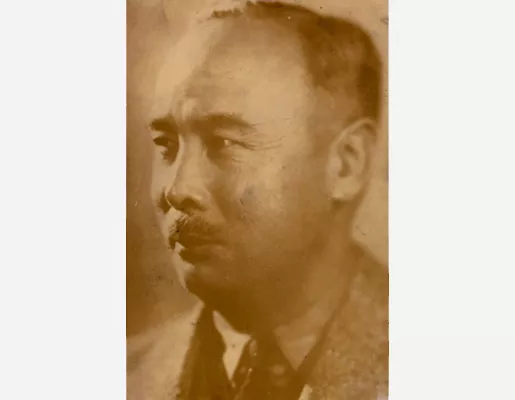d'Vinci

Yo Un-hyong
Co-founder, Korean Provisional Government, 1919; Leader, Korean People's Republic, 1945-1947.

b. 1885 - d. 1947
Yo Un-hyong was a Korean populist leader, and stood in opposition to the Japanese occupation. Following the conclusion of WWII, Yo worked to create the Korean People's Republic (KPR).
Co-founder, Korean Provisional Government, 1919; Leader, Korean People's Republic, 1945-1947
Yo Un-hyong was a Korean populist leader, and stood in opposition to the Japanese occupation. Following the conclusion of WWII, Yo worked to create the Korean People's Republic (KPR).
Co-founder, Korean Provisional Government, 1919; Leader, Korean People's Republic, 1945-1947

Yo Un-hyong was born in 1885, in the province of Kyonggi. He came from an impoverished Yangban (Korean gentry elite) family. One of his uncles had been a leader in the Tonghak Rebellion of 1892-94 – a peasant uprising that sought to eliminate Queen MinÍ's corrupt oligarchy from positions of influence in the court and called for the expulsion of all Japanese from Korean soil. In 1919, Yo had been a founding member of the Korean Provisional Government in exile. In 1927, Yo was sent to prison for three years for anti-Japanese political activities while abroad. Upon his release, Yo became editor of Chung'ang ilbo, a daily newspaper in Seoul. During the remainder of the Japanese Occupation, Yo was under severe pressure from the Japanese authorities to collaborate. Yo resisted every attempt and unlike many prominent Koreas who collaborated with the Japanese at one time or another, Yo had an unblemished record during the occupation.
Yo gained renown as a Korean populist leader. Politically, he held a faith in socialism as well as in liberal democracy, and he freely mixed his politics with Christian ethics. Although, Yo was always willing to work with communists, he was never a member of the Korean Communist Party. At one time, Yo was known to have remarked that he could never become a communist because of his inability to accept a materialist view of history.
On the day of liberation, 15th of August 1945, Yo headed the Korean People's Republic and the various "people's committees" that existed at the local level. The KPR was a genuine attempt to create a popular front coalition government in Korea. The KPR definitely leaned to the left end of the political spectrum, but included moderates and conservative nationalists as well. Yo Un-hyong's dream of a single, unified national government for all of Korea died when General John Hodge (head of the U.S. Military Mission in Korea) refused to recognize the Korean People's Republic as the official governing body in Korea.
After the disbanding of the KPR, Yo Un-hyong continued his efforts to organize a coalition government that would represent all the various factions in the Korean political landscape. Unfortunately, his efforts were abruptly cut short by an assassin's bullet in 1947.
Yo gained renown as a Korean populist leader. Politically, he held a faith in socialism as well as in liberal democracy, and he freely mixed his politics with Christian ethics. Although, Yo was always willing to work with communists, he was never a member of the Korean Communist Party. At one time, Yo was known to have remarked that he could never become a communist because of his inability to accept a materialist view of history.
On the day of liberation, 15th of August 1945, Yo headed the Korean People's Republic and the various "people's committees" that existed at the local level. The KPR was a genuine attempt to create a popular front coalition government in Korea. The KPR definitely leaned to the left end of the political spectrum, but included moderates and conservative nationalists as well. Yo Un-hyong's dream of a single, unified national government for all of Korea died when General John Hodge (head of the U.S. Military Mission in Korea) refused to recognize the Korean People's Republic as the official governing body in Korea.
After the disbanding of the KPR, Yo Un-hyong continued his efforts to organize a coalition government that would represent all the various factions in the Korean political landscape. Unfortunately, his efforts were abruptly cut short by an assassin's bullet in 1947.
